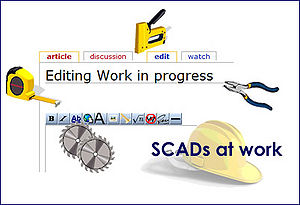GEDCOM File Guide and FAQ
Gedcom files are amongst the most useful types of file used by family history researchers. They can be used to share large amounts of information quickly from one researcher to another or to upload onto the many tree building sites that are now available.
Although gedcom files are quite easy to create and use they can appear to be a daunting subject, this guide is intended to explain the main points about gedcom files and answer many of the frequently asked questions that are posed.
Gedcom Basics
GEDCOM; Acronym for General Data Communication
A gedcom is a standard method used to format your family tree data into a text file. The file is written in a code and a genealogy software program is used to read and convert the coded text file. The Church of The Latter Day Saints originally developed the gedcom format in the mid 1980's and the format has been updated several times since it was introduced.
Typically a gedcom file is used to share information between researchers or to upload to the growing number of tree building and genealogy database websites that are now available.
Gedcom are text only files, they cannot be used to transfer images or photographs. To fully utilise the benefits of a gedcom file requires a gedcom reading programme or a genealogy oftware programme installed on a computer but it is possible to open a gedcom file in a word processor programme, however the files contain large blocks of text and can be difficult to read and understand, for this reason it is far easier and more convenient to download or purchase a software programme.
Using gedcom files
Gedom files are used to quickly transfer information either from one researcher to another or to create family trees on another computer or website.
Although it is possible to transfer information without the need for a gedcom file the process is far more accurate and quicker when gedcom files are used.
Sending information is a three step process and is usually called "exporting".
Step 1 is to create a gedcom file
Step 2 is to save the file on your computer
Step 3 is to send the file as an e-mail attachhment or upload the file to a website
Creating a file is best done with a genealogy softare programme, a word processor programme can be used but the process is very tedious and longwinded, even a small file (say 6 individuals) can take hours to create and mistakes are easy to make.
Receiving a file is again a three step process and is often referred to as "importing"
Step 1 is to download the file, eiither from an e-mail or website
Step 2 is to save the file to your computer
Step 3 is to open the file, this requires a gedcom reading programme (genealogy software) or a word processing programme on your computer.
Please note, that using a word processor package to open and read a gedcom file is far from ideal, it can be done but the knowledge required to understand the codes, relationships and information makes it a very long process, even for the smallest files
An extract and explanation of gedcom text file codes can be seen here,
Gedcom FAQ
reserved
Guides and Troobleshooters
Links to "how to" guides and troubleshooting solutions can be found at the following links
